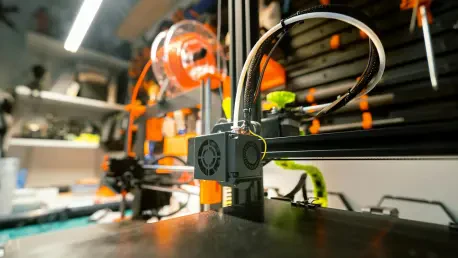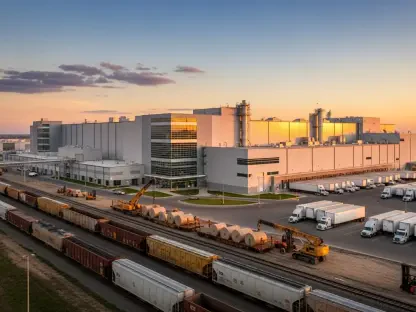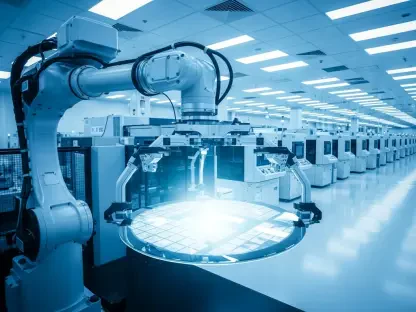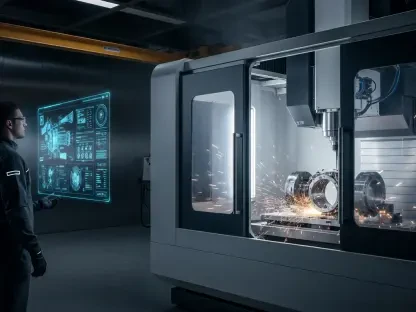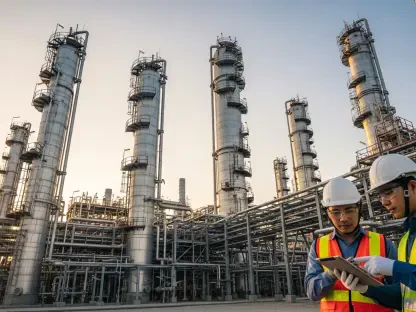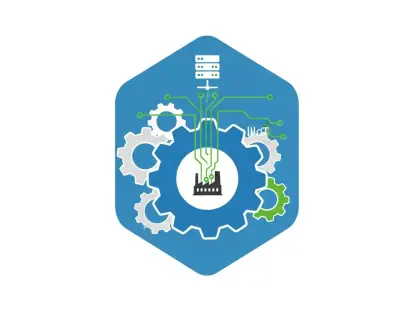In a world where global disruptions, skyrocketing costs, and shifting consumer expectations have become the norm, businesses are grappling with the urgent need to rethink how goods are produced and delivered, turning to innovative solutions like additive manufacturing. Traditional supply chains, built on the foundation of mass production and long-distance shipping, often buckle under the strain of raw material shortages, logistical delays, and unpredictable demand. Enter additive manufacturing, more widely recognized as 3D printing, which is emerging as a game-changer capable of transforming these outdated systems into agile, responsive networks. This technology isn’t just about creating objects layer by layer; it’s about dismantling the rigid structures of the past and replacing them with flexible, localized solutions. By partnering with specialized suppliers, companies can now address vulnerabilities, cut costs, and meet customer needs with unprecedented speed. This shift signals a profound evolution in how supply chains operate, promising resilience and innovation for those willing to adapt to a rapidly changing landscape.
Addressing Vulnerabilities in Traditional Models
The fragility of conventional supply chains has been exposed time and again through global crises, from pandemics to geopolitical tensions, leaving businesses scrambling to maintain operations. These systems, heavily reliant on overseas manufacturing and vast warehousing, often falter when faced with transportation bottlenecks or sudden spikes in energy costs. The result is delayed deliveries, inflated expenses, and dissatisfied customers who demand faster, more tailored solutions. 3D printing offers a compelling alternative by enabling on-demand production closer to the point of consumption. This localized approach slashes the risks associated with long supply lines and reduces the need for extensive inventory storage. Companies can produce exactly what is needed, when it’s needed, without the burden of overstock or waste. By minimizing dependence on vulnerable global trade routes, businesses gain a buffer against disruptions, ensuring continuity even in turbulent times. This adaptability marks a critical step toward building supply chains that can withstand modern challenges with greater ease.
Another dimension of this transformation lies in the strategic partnerships with additive manufacturing suppliers, who bring more than just technology to the table. These collaborators provide deep expertise in material selection, design optimization, and scalable production processes, helping companies navigate the complexities of adopting new methods. Unlike traditional setups where changes to production lines can take months and significant investment, 3D printing allows for rapid adjustments based on real-time market feedback. Suppliers act as guides, ensuring that businesses not only implement the technology effectively but also integrate it into broader operational strategies. This relationship fosters resilience by enabling firms to pivot quickly in response to unforeseen obstacles, whether it’s a sudden shift in consumer preferences or a breakdown in global logistics. The ability to customize products at scale without the usual delays further strengthens a company’s position, making it possible to meet niche demands while maintaining efficiency across the board.
Balancing Cost, Speed, and Sustainability
One of the most striking advantages of 3D printing in supply chain management is its ability to streamline costs and accelerate production timelines in ways traditional manufacturing cannot match. Conventional methods often require expensive tooling and molds, making small-batch runs or prototyping prohibitively costly and time-consuming. In contrast, additive manufacturing builds directly from digital designs, eliminating the need for such upfront investments and allowing for rapid iteration. This means products can move from concept to market in a fraction of the time, giving businesses a competitive edge in dynamic industries. Additionally, the reduction in material waste—since only the necessary amount is used—translates to lower expenses and aligns with cost-saving goals. By cutting down on the inefficiencies of overproduction and long shipping distances, companies can redirect resources to innovation and growth, positioning themselves as leaders in a market that increasingly values speed and adaptability.
Beyond financial benefits, the environmental impact of 3D printing offers a powerful incentive for businesses aiming to meet sustainability targets and consumer expectations. Traditional supply chains contribute significantly to carbon emissions through extensive transportation networks and excess production that often ends up discarded. Additive manufacturing, however, supports a more eco-friendly model by producing goods locally, thus shrinking the carbon footprint associated with shipping. The precision of the technology also minimizes material waste, as items are created layer by layer with exact specifications. This efficiency resonates with a growing audience that prioritizes green practices, providing companies an opportunity to enhance their brand reputation while addressing regulatory pressures for sustainable operations. As environmental concerns continue to shape purchasing decisions, integrating this technology into supply chain strategies becomes not just a practical choice but a vital one for maintaining relevance in a conscientious market.
Envisioning a Leaner, Smarter Future
Looking ahead, the integration of 3D printing into supply chain frameworks promises to redefine how businesses operate on a fundamental level, moving away from cumbersome global dependencies toward leaner, more intelligent systems. The vision is one of agility, where companies can proactively adapt to market shifts without the constraints of rigid production schedules or distant suppliers. Additive manufacturing suppliers play a pivotal role in this future, equipping firms with the tools and knowledge to localize production and respond swiftly to emerging trends. This shift reduces the lag between demand and delivery, ensuring that businesses remain aligned with customer expectations no matter how quickly they evolve. Over the next few years, from now through 2027, the adoption of such technologies is expected to grow, paving the way for supply chains that are not only more efficient but also inherently more robust against external shocks, setting a new standard for operational excellence.
The potential for continuous innovation through these partnerships cannot be overstated, as they enable a cycle of improvement that keeps companies at the forefront of their industries. By leveraging the expertise of additive manufacturing specialists, businesses can experiment with new materials, refine designs, and scale operations without the traditional barriers of cost or time. This dynamic approach fosters an environment where creativity and practicality converge, allowing for the development of products that are both cutting-edge and market-ready. Moreover, the data-driven nature of digital manufacturing provides insights that can further optimize supply chain processes, from inventory management to distribution logistics. As firms build these capabilities, they lay the groundwork for a future where supply chains are not just reactive to challenges but predictive, using technology to anticipate and address issues before they arise. This forward-thinking mindset is essential for sustaining growth in an era defined by uncertainty and rapid change.
Reflecting on a Paradigm Shift
Looking back, the journey toward integrating 3D printing into supply chain strategies revealed a profound shift in how businesses tackled the limitations of traditional models. The vulnerabilities of long, complex networks were laid bare, prompting a turn toward localized, flexible solutions that additive manufacturing made possible. Partnerships with specialized suppliers proved instrumental, offering not just technology but also the strategic guidance needed to navigate uncharted territory. The focus on sustainability and cost efficiency reshaped priorities, aligning operations with broader societal values. As companies adapted, they discovered that this wasn’t merely about producing goods differently; it was about reimagining the very flow of value from creation to delivery. Moving forward, the challenge lies in scaling these innovations, ensuring that systems remain agile while exploring new applications for the technology. Embracing ongoing collaboration and investment in additive manufacturing will be key to securing a competitive edge in an ever-evolving landscape.
